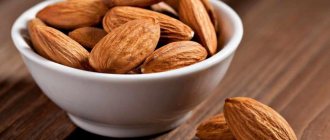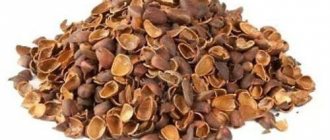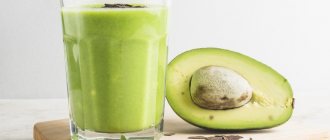When is Walnut Day celebrated?
In June 1949, the United States proposed an annual observance of National Walnut Day. This was done to popularize the royal nut. And on March 3, 1958, the 34th President Dwight David Eisenhower issued an official statement that this day was now fixed for May 17, then the celebration of the first National Walnut Day took place.
Ripe walnut
Which nuts are the healthiest for weight loss: counting calories
The high energy value and 50 percent fat content that makes this natural delicacy so delicious is what stops us when we think about adding nuts to our daily diet. However, the significant benefits of such products are a reason for new considerations. Any restrictions are stress, which leads to the accumulation of calories “in reserve” and a decrease in the defenses of our body. You shouldn’t completely deprive yourself of “healing” goodies - it’s important to eat them correctly, not forgetting to measure the calorie content of each serving.
What is the energy value of the most popular nuts? We offer you the following numbers:
| raw | fried | |
| Peanut | 606 | 640 |
| Chestnuts | 169 | |
| Walnuts | 696 | |
| Cashew | 643 | 772 |
| Pine nuts | 639 | |
| Almond | 616 | 650 |
| Pistachios | 625 | 649 |
| Hazelnut | 704 | |
| Hazelnuts | 680 |
The above values can plunge into despondency every lover of tasty kernels who cares about their figure. How can you regain lost slimness if the energy value of some products from the table is so high that it’s time to think about categorically refusing these healthy delicacies? Let us repeat once again - you need to get rid of excess weight with pleasure, and not with regret about goodies that are banned. Don't harm your body by leaving it without beneficial vitamins and minerals - just learn to eat right.
Walnut, where did its name come from in English and Russian?
Walnut in English is walnut, the word comes from the Old English wealhhnutu, literally “foreign nut” (from wealh “foreign” + hnutu “nut”), as it was brought to England from Gaul and Italy. The Latin name for the walnut was nux, meaning "Gallic nut".
The Russian name is also associated with the origin of walnuts. Pavel Syutkin, a historian of culinary and Russian cuisine, writes: “In Russia, acquaintance with walnuts apparently occurs in the 12th-13th centuries, when close contacts were established with Byzantium. It is from there that nuts come to us, but they are called “Greek”. Then many products and objects coming from this part of the world are called “Greek”, for example, buckwheat, known to everyone (according to one version of the origin of this word).”
Walnuts were also called “royal nut”, “Greek nut” and “Voloshsky nut” in Russian.
Fruit of the walnut tree
Walnuts, where do they come from? From Greece?
Walnuts, according to one of the most common versions, originated in Northern India. In the middle of the 15th century. Constantinople, the capital of Byzantium, fell under the onslaught of the Turkish Sultan. Pavel Syutkin: “Trade ties with Russia were interrupted for a long time. Around the 16th-17th centuries, their new name appeared in Rus': “Volosh nuts”. These are the same walnuts, only brought to us from Wallachia (the south of modern Romania).”
In Vladimir Ivanovich Dahl’s we find: “Nut is masculine, a tree fruit in a hard, strong shell. Sometimes they say instead of hazel and hazel, walnut or walnut tree, meaning Voloshsky nut, walnut.” By the end of the 19th century, the name “walnuts” became predominant in the Russian language.
Encyclopedic Dictionary of Brockhaus and Efron : “Walnut, Voloshsky nut (Juglans L.).”
Eggplant rolls with walnuts, see recipe here
Now, as promised, let's talk about the benefits and harms of walnuts.
Why should you not exceed your daily allowance for nuts?
Knowing all the beneficial properties of nuts, you should not abuse them. The effect can be completely opposite. Nuts are a very high-calorie product. So, one hundred grams of fruit contains over 650 kcal. It follows from this that regularly exceeding the permissible limit can lead to significant weight gain. Even obesity may develop.
In addition, everyone knows that nuts are on the list of allergenic foods. Excessive consumption may result in the release of histamine into the blood, which can provoke the following allergic reactions:
- Swelling of the mucous membranes;
- Allergic rhinitis;
- Cough, choking;
- Hives;
- Quincke's edema;
- Nausea, vomiting;
- Anaphylactic shock.
There are also a number of contraindications that prohibit consuming even the minimum amount of the product per day. This includes any skin diseases, poor blood clotting, diseases of the pancreas and intestines in the acute stage. The 30 gram limit applies only to adults. For children, the norm is slightly different.
Today, experts still have not come to a consensus on when to start giving nuts to children. Some argue that the optimal age is two years. Others do not advise giving fruits to eat until the age of five. Most doctors allow you to start including nuts in your diet from the age of three. As for the norm, it should not exceed 2-3 fruits per day. If there are no strict contraindications for use, adherence to the daily norm will only bring benefits to the body of each person.
Walnuts, benefits and harm. And detail?
In terms of calorie and protein content, walnuts are comparable to meat, but are easier to digest. Citrus fruits are superior in the amount of vitamins. They are recommended for vitamin deficiency, iron deficiency, as a general tonic; they have a positive effect on the blood vessels of the brain and relieve nervous tension.
Benefits of walnuts
- Memory improvement. Nuts contain omega 3 and 6 essential fatty acids, which help improve memory and cognitive function.
- Preventing depression. Research has shown that low omega-3 levels can harm your alertness and vitality. Since walnuts are high in omega-3, they help prevent depression.
- Improved motor function. Omega-3 fatty acids do wonders for the brain, including improving motor function.
- Preventing heart disease. Studies conducted in the US, Australia, New Zealand, Spain and Israel concluded that two to three servings of walnuts per day lowered cholesterol levels sufficiently to reduce the risk of coronary heart disease.
- Improvement of "masculinity". A handful of walnuts eaten every day increases the viability and motility of sperm.
- Skin beauty support. Eating walnuts helps the skin look younger - healthy and elastic. Thanks to vitamin E for this. By the way, walnut oil is a valuable cosmetic product for reducing dry skin.
- Walnuts are a source of biotin (vitamin B7), which helps keep hair and nails healthy and prevents hair loss and brittle nails. Vitamin E gives hair and nails a healthy shine.
- Help with weight management. Walnuts are high in fiber, protein, and fat, which help you feel fuller longer.
- Extra boost of energy. Walnuts contain many B vitamins (B1 - 0.39 mg, B5 - 0.82 mg, B6 - 0.8 mg, etc.). They can increase the amount of energy in the body. This definitely fits with the weight management factor. When you're energized, you're more likely to get active and burn calories! Try regularly eating walnuts with natural yogurt as an afternoon snack or a pre-workout snack.
Harm of walnuts
The dangers of walnuts are probably not entirely correct. There are some restrictions on the consumption of walnuts - that’s more accurate. Walnuts are high in calories, so consuming them in excess may lead to slight weight gain. In some people, high consumption of walnuts may be associated with diarrhea due to the nuts' high oil content. Below we will tell you exactly how many walnuts you need to eat per day so that no problems arise.
Walnuts, like other types of nuts, can cause food allergies. Currently, nut allergies are diagnosed in approximately 2% of the world's population.
Red bean pate with walnuts, see recipe.
Is it possible to eat nuts on a diet?
A handful of nuts is an ideal substitute for sweets. Despite their high calorie content, you will not gain as much excess weight as if you ate candy. However, this does not mean that you don’t have to limit yourself to nuts: an unhealthy passion for this product can increase body weight.
It is very important to understand how many walnuts and other nuts you can eat per day without harm to your health. About 30 grams of this natural product will not affect your weight in any way, and at the same time will benefit the body. From this we can conclude that if used correctly, a handful of natural product will not end up adding extra pounds to your waist.
Are walnuts the healthiest nuts?
A very possible statement! Walnuts contain the highest amount of antioxidants compared to other types of nuts (about 2 times). Undoubtedly, they are very nutritious, but king nuts are much healthier than peanuts, almonds or pistachios.
A study by American scientists says that the antioxidants in walnuts are 2-15 times stronger than vitamin E. Meanwhile, it is known that this vitamin protects the cells of the human body from damage by natural chemicals that cause various diseases.
Walnut baklava, see recipe here
Nuts during lactation
Lactation
Women who are breastfeeding should also eat nuts. They are rich in proteins, amino acids and other useful elements that are necessary for the health of a young mother, as well as the full growth and development of an infant.
Breastfeeding women should adhere to other norms and eat no more than 15 g of nuts per day. This norm should not be violated, even if eating nuts does not cause negative reactions from the child’s body.
How many nuts can a nursing mother eat? The quantity depends on the type of nuts. So you can eat 110 pine nuts, and 30 pistachios. How many walnuts do you need to eat to saturate your body with all the vitamins? 6-7 pieces are enough.
Walnuts, why do some people soak their kernels before eating?
Some people find fresh nuts difficult to chew. Soaking walnuts in water for 1-2 hours softens them without losing nutritional value!
Walnuts are also soaked in warm water to remove the thin brown skin. This is often done when preparing cream, sauce, mousse or soufflé - something very tender and homogeneous. Pieces of skin are not needed in such dishes.
Soaking walnuts helps reduce the level of bad cholesterol in the body and such nuts are easier to digest compared to regular, dry ones. To do this, simply soak 2-4 walnut kernels overnight in 1 glass of water and eat before breakfast in the morning.
Beef kharcho soup with rice and walnuts, see recipe here
Beneficial features
Nutritional value of nuts:
- fats - 50-75%;
- proteins - 13-20%;
- carbohydrates - 5-20%.
Nuts contain unsaturated fatty acids, which are much healthier than animal fats. Vegetable fats do not contain cholesterol, so they contribute to full fat metabolism.
Different types of nuts have different positive effects on the human body:
Nuts in a saucer
- Almonds are used for tachycardia, otitis media, stomatitis, pneumonia, and gastrointestinal diseases.
- Cashews are used to prevent atherosclerosis, osteochondrosis and arthritis.
- Pine nuts. Strengthen the immune and cardiovascular systems, normalize blood pressure.
- Walnuts. They help fight thyroid diseases, anemia and diathesis.
Separately, it is worth noting the positive effect of nuts on men. For example, eating walnuts improves sperm quality, and pecans help in the treatment of prostate diseases.
Walnuts, BZHU, content of calories, vitamins and microelements
100 g of raw walnuts contains:
- proteins – 15.2 g
- fat – 65.2 g
- carbohydrates – 13.7 g
- water – 4.07 g
- calories – 654 kcal and 2740 kJ
- fiber – 6.7 g
- sugar – 2.61 g
- calcium – 98 mg
- iron – 2.91 mg
- magnesium – 158 mg
- phosphorus – 346 mg
- potassium – 441 mg
- biotin – 2.6 mg
- vitamin E – 2.6 mg
1 serving (28 g) of walnuts contains: 2.6 g omega-3 and 10.8 g omega-6.
Simple chicken satsivi with walnuts, see recipe here
Composition and calorie content
| Nut | Proteins, g | Fats, g | Carbohydrates, g | Kcal |
| Gretsky | 16 | 60 | 24 | 654 |
| Almond | 31 | 39 | 30 | 576 |
| Cashew | 26 | 44 | 30 | 553 |
| Hazelnut | 17 | 61 | 17 | 628 |
| Peanut | 26,3 | 45,2 | 9,9 | 551 |
| Pistachios | 30,8 | 56,6 | 12,6 | 642 |
| Cedar | 13,7 | 68,4 | 17,9 | 673 |
Walnuts, how many cleaning methods are there?
We know 7 cleaning methods, among them there is one - the most proven one. This is buying already shelled walnuts! Not only do you not need to peel the nuts, you also immediately see the nut kernels and can evaluate the quality of the product. And what a saving of time and effort!
The remaining 6 ways to clean walnuts:
- the “door hinge” method is an adventurous method, but most often the most reliable,
- blow with a hammer; for this, do not forget to soak the walnuts in warm water for a couple of hours to soften the shells a little,
- the “bare hands” method, most suitable for strong and resilient hands; for it, two walnuts need to be pressed against each other and squeezed,
- using a sharp knife is a dangerous way to peel walnuts; suitable for experienced and dexterous people, contraindicated for children,
- the use of various gadgets and devices, including a screw press similar to the Nutcracker,
- freezing is the most original of all methods of cleaning walnuts.
Let's talk about the last cleaning method in more detail. Using a freezer to crack walnuts is due to the properties of water, which expands when frozen. Place the walnuts in a freezer-safe Ziploc bag and seal tightly. Place the sealed bag in the freezer for several hours. The water contained in the nuts and their shells freezes, expands and... the walnut shells crack.
This method is good for walnuts intended for baking. Nuts become a little soft when frozen.
Rye muffins with walnuts on Varenets, see recipe here
How many nuts can you eat when losing weight: you need to know moderation in everything
Should I eat a whole handful or limit the portion? Alas, the temptation is too great - the insidiousness of high-calorie kernels is that we begin to absorb them without stopping, forgetting about self-control. The result is disappointing: new wrinkles appear on the sides, and the number on the scale inexorably creeps up.
It is important to remember: you can eat from 4 to 6 nuts per day. Some experts talk about 30 g of your favorite treat per day. This snack will allow you to satisfy your hunger for a long time and forget about your increased appetite - the high content of protein and fiber makes this irreplaceable product an excellent means of satiation. However, it is necessary to eat a portion exclusively in the first half of the day - after 16:00 all the absorbed calories will go into the “bins” of our body.
Is it possible to eat walnuts, pine or hazelnuts when losing weight and nibble on almonds, chestnuts and pistachios without fear for your figure? Why not? It is important to constantly monitor the caloric intake of what you put into your mouth - since the energy value of these products is extremely high, every gram counts! Don’t forget to weigh the handful you have stored, and write down the results and time of eating in a special diary - this way there will be no reason to panic, and you will know for sure whether the daily norm has been exceeded or not.
Walnuts, how many to eat per day?
Walnuts have a high calorie content: more than 600 kcal per 100 g. At the same time, as mentioned above, they are very healthy, so scientists and nutritionists disagree on how many walnuts you can eat per day. The average norm is 40-50 g.
If you are preparing dishes, remember that 1 glass of 250 ml contains 160 g of walnuts.
Millet porridge with pears and caramelized walnuts, see recipe here
Contraindications
Nuts are an unrivaled source of fats, vitamins and microelements, but do not forget that almost every product, no matter how healthy it may be, has its own contraindications.
For example, it is not recommended to eat walnuts if you have diseases of the internal organs and gastrointestinal ulcers. People with arrhythmia should avoid eating almonds. Cashews are contraindicated in case of individual intolerance, and hazelnuts are not recommended for diabetics. People with cardiovascular diseases should avoid peanuts. Peanuts, like pistachios, are a very strong allergen. The small kernels of pine nuts can cause airway blockage in young children.
Walnuts, what is the best way to store them?
Fresh walnuts, properly dried, can be stored in their shells for up to 3 years.
Once refined, the oils in raw walnuts quickly become rancid. Such nuts should either be used as soon as possible - almost immediately after removing the shell, or stored in the refrigerator or freezer. Nuts can be stored in the refrigerator for six months, in the freezer - up to 1 year.
Shelled nuts sold in stores go through several stages before packaging, including pasteurization. Pasteurization ensures the safety of products by increasing their shelf life. Plus, pasteurization does not particularly affect the content of antioxidants; there are almost no fewer of them!
Feijoa jam with walnuts, see recipe here
Norm per day
The above standards apply to adult men and women. During pregnancy and for children, the norms for nut consumption are different. Regardless of the type of nuts, they must be fresh and of high quality. The daily norm can be made up of one type of fruit or a mix of nuts.
During pregnancy
During pregnancy, nuts will bring many benefits to the woman, as well as to the developing fetus. Do not forget that they are not very easily digestible. Therefore, they should be soaked: fill with water and leave for about 2 hours. It is better to soak nuts that have already been peeled from a thin skin, because it contains bitter compounds and inhibitors that interfere with absorption. You should not eat more than 20-25 g of product. In terms of walnuts, this is no more than 10 fruits. During pregnancy, special attention should be paid to the absence of mold on nuts, as it releases toxins. Nuts affected by fungi should never be eaten.
When feeding
Various nuts are beneficial for women during lactation, as they supply the body with essential fats and proteins, enhancing milk production. The norm is no more than 15 g per day. It should not be exceeded even if the mother has no side effects from eating nuts: they can occur in the child. It is beneficial to add them to various dishes. Instead of fruits, you can include nut butter in your diet by dressing salads with it. This approach will help regulate bowel function and relieve constipation.
For children
Nuts should be introduced into children's diets with caution, as they can cause allergies. In addition, this product contains a lot of fats, which are poorly absorbed by the child’s body in large quantities. A nut can be dangerous for a baby because it is easy for them to choke or inhale. It is preferable to give children hazelnuts, walnuts or pine nuts.
As for age, it is better not to give nuts to children under 3 years of age. According to some nutritionists, the optimal age to start eating nuts is 5 years old, always under adult supervision. The norm for children is about 30 g per week. Preschool children are allowed to eat 2 walnuts daily, schoolchildren can eat up to 5 fruits per day.
A valuable source of proteins, healthy fats, antioxidants - it's all about nuts. They are also able to replenish the deficiency of macro- and microelements in the body and supply vitamins. If you consume them more than normal, you can provoke allergies, migraines, problems with the stomach and intestines. Children should use nuts with caution.
Walnuts, how can you use them?
Walnuts add crunch and flavor to baked goods and desserts - pies, breads and cakes. They are good to add to the dough for muffins, pancakes and waffles, plus to prepare homemade baklava and kozinaki. But sweets are not the only use for walnuts. Use them when preparing soups, especially thick ones, like Megrelian kharcho or steamed vegetables. Walnuts perfectly complement baked vegetables, salads, including fruit ones. Finely chopped walnuts make an excellent breading for cutlets or meatballs.
Walnuts form the basis of many sauces - for example, Georgian satsivi and bazhe. In the Caucasus, walnuts generally enjoy incredible love. In Georgia, in addition to sauces with walnuts, lobio and pkhali are prepared from vegetables, in Abkhazia they are added to green appetizers (acharkhal), in Azerbaijan they are used as a filling for lavangi fish, in Armenia - for khapama, stuffed pumpkin.
Walnuts can also be added to protein shakes and smoothies by grinding them together with other ingredients. They can be used to make homemade walnut chutney or a sauce made with walnuts, garlic, ginger, mint, lemon juice, oil, salt and freshly ground black pepper.
We will highlight three of the simplest ways to prepare walnuts. The first method is nut muesli, a multifunctional additive to ice cream, cottage cheese, yogurt, sour cream, and Varenets. To make this, pulse the walnuts in a food processor with the oats, flour and brown sugar until medium crumbly. No need to punch into flour! Mix the prepared mixture with a small amount of vegetable oil. Do not pour a lot at once, but add literally drop by drop and mix, achieving the consistency of wet sea sand. Place the mixture on a baking tray lined with baking paper and bake in an oven preheated to 180°C until crispy. Serve with berries or fruits and dairy products.
For picky children - “Wonderful nut butter.” Just mix some cocoa powder and honey. Add walnuts, pureed in a blender until finely crumbled. Stir and season with lemon or orange juice. Store the paste in an airtight jar.
And finally, we'll tell you how to make crispy walnuts. Mix 450 g of shelled nuts and 1 tbsp in a bowl. l. sea salt. Pour drinking water over the nuts and leave for 8-12 hours. Place in a sieve, quickly rinse and dry with paper towels. Spread in a single layer on a baking tray lined with baking paper. Dry at 50°C for at least 3 hours or more, depending on how crispy you like them.
Festive chocolate sausage with walnuts, see recipe here











